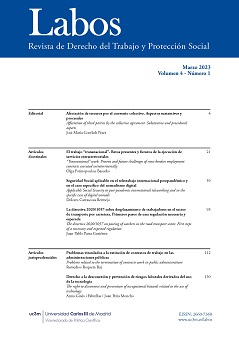Balance de la reforma de la negociación colectiva
Resumen
Transcurrido un año de la publicación y entrada en vigor del RD-Ley 32/2021, procede realizar un balance de los efectos de la reforma laboral en materia de negociación colectiva, tanto con el fin de verificar el cumplimiento de los objetivos pretendidos como de explorar aquellas consecuencias no queridas por la norma. Para ello, es necesario, en primer lugar, conocer cuáles eran las dificultades detectadas y a las que pretendía poner remedio. En un segundo momento, se ha de comprobar la eficacia de las reformas en materia de concurrencia de convenios (art. 84.2 ET) a través del refuerzo del protagonismo del convenio de sector como eje vertebrador de la estructura negociar; el establecimiento de criterios a la hora de seleccionar el acuerdo de aplicación en caso de contratas (art. 42.6 ET); el mantenimiento de la ultraactividad de los pactos (art. 86 ET); y la llamada a la negociación sectorial a lo largo de su articulado.
En esta primera evaluación conviene tener en cuenta que los tiempos de la autonomía colectiva y sus resultados precisan de una mayor perspectiva, y las disposiciones transitorias de la propia norma impiden una mayor precisión en la valoración realizada, sin olvidar los impactos producidos por la coyuntura socioeconómica, capaz de afectar en este ámbito en igual medida que los cambios legales.
En fin, la valoración de los cambios es positiva, aun cuando los efectos están aún por determinar, no ha transcurrido el tiempo necesario para constatar resultados, pero sí para advertir líneas de tendencia capaces de marcar el camino del futuro mapa negocial.
Descargas
Derechos de autor 2023 LABOS Revista de Derecho del Trabajo y Protección Social

Esta obra está bajo licencia internacional Creative Commons Reconocimiento-NoComercial-SinObrasDerivadas 4.0.
Loa autores ceden a la Revista Labos los derechos de reproducción y distribución, así como cualquier forma de explotación del trabajo.
Datos de financiación
-
Ministerio de Ciencia e Innovación
Números de subvención PID2021-122631OBC21




